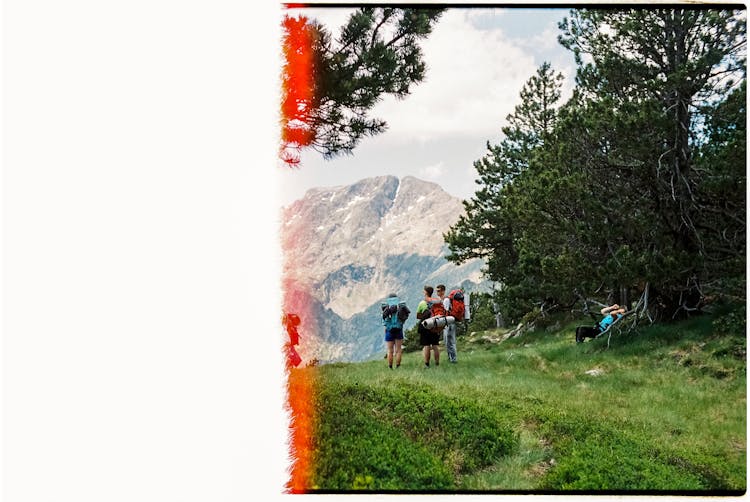All Categories
Featured
Table of Contents
Essential Mountain Trail Safety Tips
TLDR Summary:- 🌲 Plan your hike carefully and share your itinerary.
- ⛰️ Know your physical limits and choose appropriate trails.
- 🌦️ Prepare for varying weather conditions.
- 🎒 Always pack essential gear and emergency items.
- 💧 Stay hydrated and protect yourself from the sun.
- 🚨 Be aware of emergency procedures and communications.
Before setting out on a hike, diligent preparation is crucial. Identify a safe route and share your hiking plans with someone who is not going with you. This includes the specific trail, your expected time of return, and any potential hazards you may face. Not only does this ensure your safety, but it also assists rescue teams in case something goes wrong. This detail can be a game-changer when routes in remote areas lack cell phone service.
Understanding and acknowledging your personal limits is vital.Evaluate your level of fitness and experience. If a trail’s difficulty exceeds your capabilities, you might experience an increase in risks. Knowing how much weight you can carry comfortably is also important, especially if you have medical conditions that could impede your performance. Preparation is key—select trails that match your skill level and fitness capacity, so that your trip remains enjoyable and safe.
The weather can be unpredictable, so staying informed is essential. Before you even lace up your boots, ensure you have checked the up-to-date weather reports. Don't underestimate the dangers of thunderstorms, rain, or extreme temperatures. Exercise caution and avoid high or open areas during thunderstorms. Knowledge of what the weather has in store is crucial for maintaining safety throughout your trek. For more detailed guidelines, see Hiking and Trail Running Safety Tips.
Being prepared involves packing the right gear. The 10 Essentials are vital: medical emergency kit, navigation tools such as a map and compass, adequate sun protection including sunscreen, hats, and glasses, insulation layers, illumination devices like flashlights, fire starters, repair kits for gear, nutritious snacks, plenty of hydration, and a means of emergency shelter. Having extra gear can save you in a tough spot. Also, if you’re unsure of the area, having a comprehensive hiking guide like Best Easy Day Hikes Rocky Mountain Park can be invaluable.
When you’re out in nature, protecting yourself from the sun is essential. Use sunscreen with at least SPF 30, wear protective sunglasses and a wide-brimmed hat, and stay hydrated by drinking plenty of water. It's recommended to avoid caffeine and alcohol, as these may contribute to dehydration. Take breaks in shaded areas whenever possible, and pay close attention to your body for any signs of heat illness or fatigue. Ensure to monitor your energy levels and refuel with nutritious snacks.
While on the trail, maintain safety by sticking to marked paths. Straying off the beaten track can lead to dangerous situations, especially around swift waters and slippery terrain. Use insect repellents liberally to keep bugs at bay, and regularly check yourself for ticks after hiking to prevent diseases like Lyme disease. Be cautious with steep drops and cliffs. For further tips on hiking safety, visit Happy Trails Hiking Safety Tips.
Preparing for emergencies is paramount to having a successful adventure. Leave a detailed hiking plan with a trusted individual who won’t be joining you on the hike. Ensure you carry a working cell phone and understand how to use a compass in case your gadget fails. Be ready to reach out for help if needed and give as much information as you can to rescue teams. Being specific about where you are can enhance safety if you need assistance.
Staying safe during your outdoor adventures involves awareness and preparation. As you embark on your mountain trails, always keep in mind the importance of communication, understanding your physical limits, weather preparedness, right gear, hydration, and emergency protocols. With these tips in mind, you can maximize your enjoyment while minimizing risks. For additional insights and key safety recommendations, check out 22 Essential Hiking Safety Tips to Avoid Mishaps on the Trail.
What are the 10 Essentials for hiking?
How can I prepare for sudden weather changes while hiking?
In conclusion, keeping these safety tips in mind greatly enhances your mountain trail adventures. Always take proactive steps in your planning and enjoy your hike! Remember, your safety is as important as reaching that mountain peak.
Key Takeaways:
- 🌲 Always inform someone of your hiking plan.
- ⛰️ Match your physical capability to trail difficulty.
- 🌦️ Stay prepared for weather changes.
- 🎒 Pack essential items wisely.
- 💧 Hydration and sun protection is crucial.
- 🚨 Prepare for emergencies and know your limits.

Table of Contents
Latest Posts
Eco-Friendly Roofing Options in Laredo TX
Revolutionize Your Home Network: NETGEAR Orbi 970 Series Quad-Band WiFi 7 Mesh System
Setting Up Guest Networks with NETGEAR Orbi 970
More
Latest Posts
Eco-Friendly Roofing Options in Laredo TX
Revolutionize Your Home Network: NETGEAR Orbi 970 Series Quad-Band WiFi 7 Mesh System
Setting Up Guest Networks with NETGEAR Orbi 970